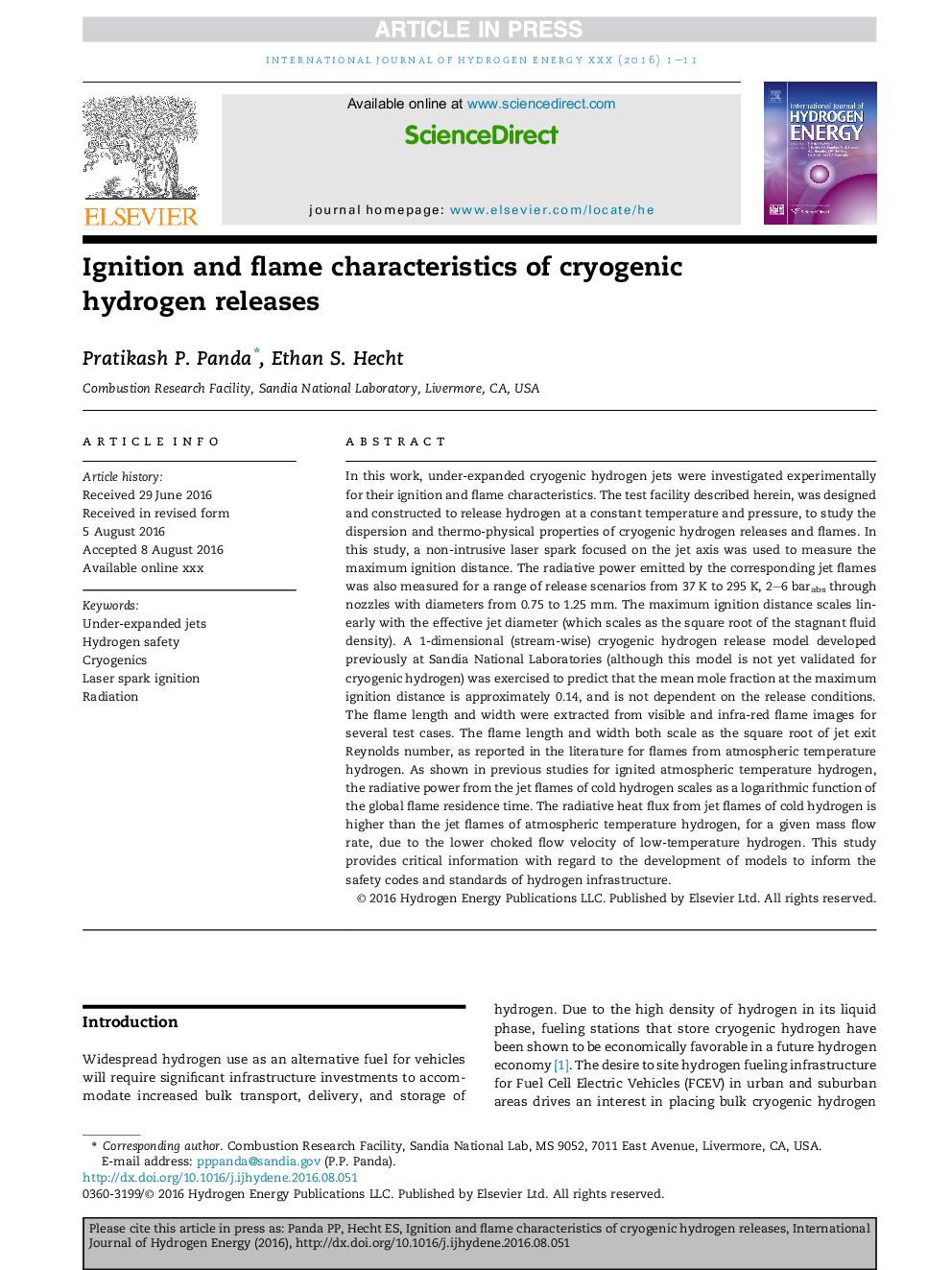| کد مقاله | کد نشریه | سال انتشار | مقاله انگلیسی | نسخه تمام متن |
|---|---|---|---|---|
| 5148131 | 1497376 | 2017 | 11 صفحه PDF | دانلود رایگان |
عنوان انگلیسی مقاله ISI
Ignition and flame characteristics of cryogenic hydrogen releases
دانلود مقاله + سفارش ترجمه
دانلود مقاله ISI انگلیسی
رایگان برای ایرانیان
کلمات کلیدی
موضوعات مرتبط
مهندسی و علوم پایه
شیمی
الکتروشیمی
پیش نمایش صفحه اول مقاله

چکیده انگلیسی
In this work, under-expanded cryogenic hydrogen jets were investigated experimentally for their ignition and flame characteristics. The test facility described herein, was designed and constructed to release hydrogen at a constant temperature and pressure, to study the dispersion and thermo-physical properties of cryogenic hydrogen releases and flames. In this study, a non-intrusive laser spark focused on the jet axis was used to measure the maximum ignition distance. The radiative power emitted by the corresponding jet flames was also measured for a range of release scenarios from 37Â K to 295Â K, 2-6 barabs through nozzles with diameters from 0.75 to 1.25Â mm. The maximum ignition distance scales linearly with the effective jet diameter (which scales as the square root of the stagnant fluid density). A 1-dimensional (stream-wise) cryogenic hydrogen release model developed previously at Sandia National Laboratories (although this model is not yet validated for cryogenic hydrogen) was exercised to predict that the mean mole fraction at the maximum ignition distance is approximately 0.14, and is not dependent on the release conditions. The flame length and width were extracted from visible and infra-red flame images for several test cases. The flame length and width both scale as the square root of jet exit Reynolds number, as reported in the literature for flames from atmospheric temperature hydrogen. As shown in previous studies for ignited atmospheric temperature hydrogen, the radiative power from the jet flames of cold hydrogen scales as a logarithmic function of the global flame residence time. The radiative heat flux from jet flames of cold hydrogen is higher than the jet flames of atmospheric temperature hydrogen, for a given mass flow rate, due to the lower choked flow velocity of low-temperature hydrogen. This study provides critical information with regard to the development of models to inform the safety codes and standards of hydrogen infrastructure.
ناشر
Database: Elsevier - ScienceDirect (ساینس دایرکت)
Journal: International Journal of Hydrogen Energy - Volume 42, Issue 1, 5 January 2017, Pages 775-785
Journal: International Journal of Hydrogen Energy - Volume 42, Issue 1, 5 January 2017, Pages 775-785
نویسندگان
Pratikash P. Panda, Ethan S. Hecht,